Psoriasis is a pink rash with silvery scales. It is pruritic and occurs in millions of people around the world. If a person or relative does not suffer from such a rash, this does not mean that they will not appear. It is important to start treating the disease in the early stages of psoriasis and not start it with a severe stage.
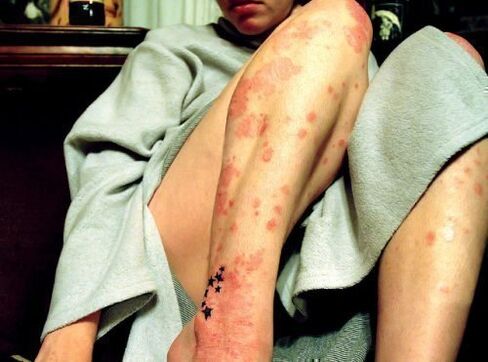
Psoriasis can be inherited, but not in all cases.
Characteristics of the disease
Psoriasis is not an infection, and the cause of its appearance is considered to be a violation of the function of the immune system. The disease can also be caused by external factors, skin injuries, stress, alcohol, antibiotics, infections.
Wounds can cover any part of the body. The rash often occurs on the arms and legs. They also occur on the palms, feet, scalp, and nails.
Psoriasis is a chronic disease that has a bumpy path. The person may experience a reduced rash or cause worsening. Relapse can be triggered by a variety of external factors.
Psoriasis does not affect normal life and does not require continuous hospitalization. Even so, this is a serious pathology that brings many difficulties and limitations.
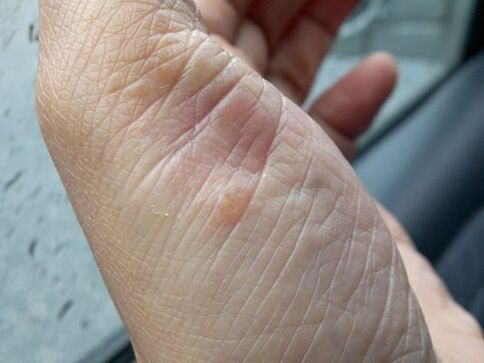
Manifestations of psoriasis can fade and become almost invisible.
Conditional division of psoriasis
There are several forms of psoriasis:
- abusive;
- seborrheic;
- droplet -shaped;
- palm-plantar;
- psoriasis of the genitals.
The most common form of psoriasis is a vulgar form of the disease. Thus, there is an edematous rash with a bright color, which is accompanied by severe itching.
There are three degrees of psoriasis, depending on the size of the affected area:
- Mild About 3 percent of the skin is affected.
- On average. The number of rashes ranges from 3 to 10 percent of the skin surface.
- Heavy. The rash occupies 10 or more percent of the skin surface.
Sometimes the disease attacks the joints. This is the worst stage, no matter what percentage of the skin is affected by plaque. It can lead to the development of psoriatic arthritis, which is accompanied by pain and swelling in the articular parts of the bone.
There are three stages of psoriasis according to the degree of exacerbation:
- progressive;
- pegun;
- regressive.
Even doctors may not always be able to recognize psoriasis at some point. In many cases, special monitoring of the progression of the disease is required. This will help determine if the psoriasis will go away or not.
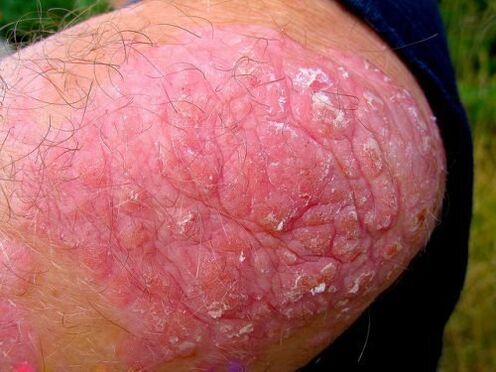
Psoriasis vulgaris has a bright pink color.
Progressive stage
In the early stages, psoriasis develops rapidly. Various rashes appear on the arms, buttocks, buttocks and legs, which grow over time and form plaques. The progression of the disease is characterized by severe itching in the affected area, which becomes wet and can lead to infection.
Early psoriasis can be treated. Therefore, it is important to make an accurate diagnosis in a timely manner. At the first symptoms of psoriasis in the early stages, you should see a doctor. Only he can determine the nature of the skin disease and its stage of development.
You can freely understand the appearance of psoriasis with a few signs:
- The rash appears in places where clothing comes in contact with the body. For example, on the sleeves in the elbow area, under the pants belt, elastic straps.
- The itchy rash is covered with gray scales.
- If you remove the crust, you can see thin, moist skin underneath.
- The condition of the nails is disturbed, dimples appear on it.
Do not use the ointment without consulting your doctor. The use of some drugs in the early stages of the disease can lead to the formation of stretch marks, thinning of the epidermis and addiction.
Usually, your doctor will prescribe zinc -based non -hormonal medications. This is an effective remedy that allows you to relieve itching, reduce skin cell proliferation and inflammation, restore the protective function of the skin and reduce the development of psoriasis at a progressive stage.
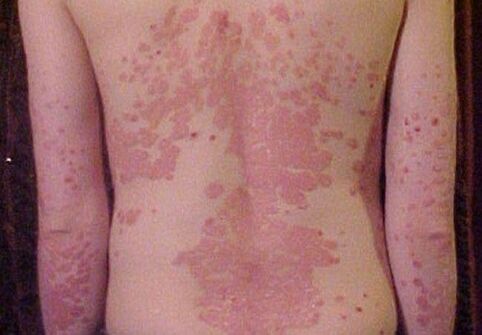
Psoriasis appears mainly in places where skin and clothing come in contact.
Stationary stage
The previous stage was replaced by an immobile stage of psoriasis. The inflamed nodule does not disappear, but does not grow. The plaque becomes dry and the inflammation is reduced.
For the treatment of immobile levels of psoriasis, preparations containing tar are very often used. Sometimes systemic therapy is used and the body is affected by ultraviolet radiation.
Regressive stage
This is the last stage of psoriasis, where plaque begins to shrink and slowly disappears. Absorption occurs from the center of the pain, and at the end of this stage, small rings and patterns remain on the skin. Itching and peeling disappear. After a rash, pigmented areas are almost invisible on the skin.
This process is the end of the psoriasis cycle, but this is not a complete recovery. The disease can recur at any time. If left untreated, then plaques will appear frequently.
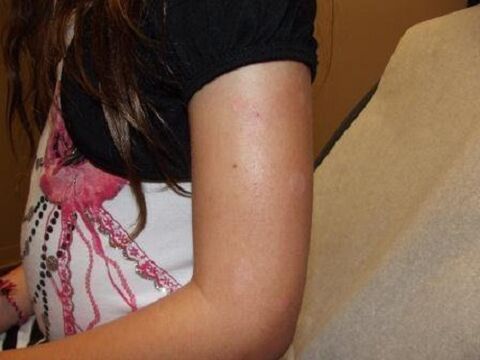
After psoriasis, spots and patterns may remain on the skin.
Treatment and prevention of psoriasis
Everyone should monitor their health and pay attention to the skin:
- Avoid wipes that are difficult to scratch your skin.
- It is better to use a special medicated shampoo. This is especially true for scalp psoriasis.
- You need to maintain optimal indoor air humidity to prevent the skin from becoming dry.
- Avoid abrasions, cuts and sores on the skin.
- Certain diets must be followed that improve the course of the disease.
- One of the main rules of prevention is the rejection of alcohol. You must not drink alcohol and quit smoking.
- Wear loose -fitting clothing and will not cause a mess.
For the prevention and treatment of psoriasis, a special massage is used. It improves blood circulation so that the skin is cleansed faster. The body part around the plaque is stretched a few centimeters and returned to the back. The procedure takes about 15 minutes.
The symptoms of the disease occur against the background of psychoemotional stress. Therefore, it is important to reduce stress to a minimum. They recommend practicing various methods of relaxation, adequate sleep and more rest, using herbal preparations and sedatives.
Some patients use folk remedies at home. To do this, use a variety of herbal injections and decoctions, ointments from eggs and lard, garlic compresses and lotions before bedtime. Alternative methods should be used after consultation with an expert.
Some medications can cause relapses and side effects. They should only be taken as directed by your healthcare professional. Unfortunately, there is no single drug that can get rid of psoriasis 100 percent forever. You can only take care of this disease easily by choosing the right medicine.























